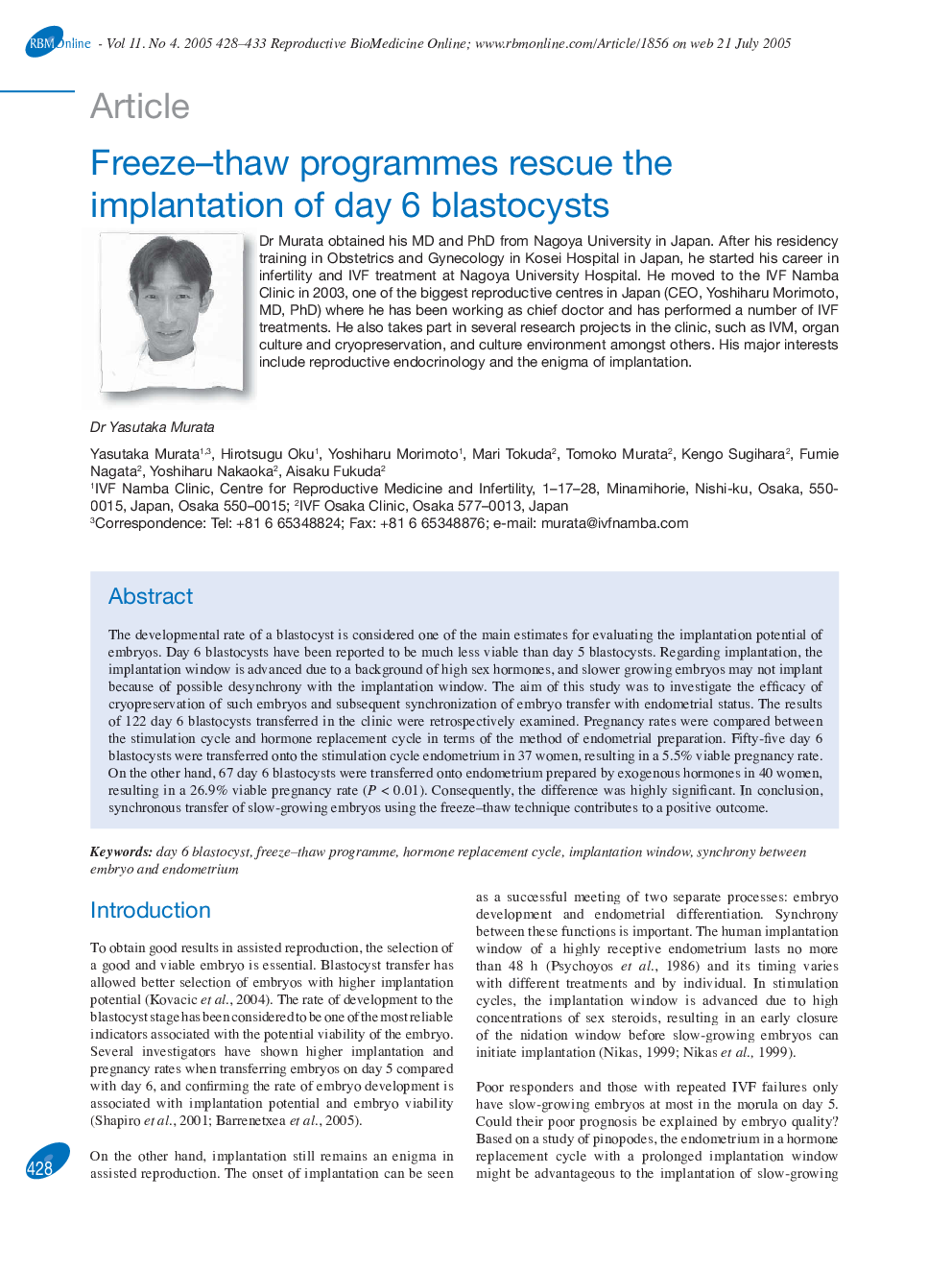| Article ID | Journal | Published Year | Pages | File Type |
|---|---|---|---|---|
| 9335211 | Reproductive BioMedicine Online | 2005 | 6 Pages |
Abstract
The developmental rate of a blastocyst is considered one of the main estimates for evaluating the implantation potential of embryos. Day 6 blastocysts have been reported to be much less viable than day 5 blastocysts. Regarding implantation, the implantation window is advanced due to a background of high sex hormones, and slower growing embryos may not implant because of possible desynchrony with the implantation window. The aim of this study was to investigate the efficacy of cryopreservation of such embryos and subsequent synchronization of embryo transfer with endometrial status. The results of 122 day 6 blastocysts transferred in the clinic were retrospectively examined. Pregnancy rates were compared between the stimulation cycle and hormone replacement cycle in terms of the method of endometrial preparation. Fifty-five day 6 blastocysts were transferred onto the stimulation cycle endometrium in 37 women, resulting in a 5.5% viable pregnancy rate. On the other hand, 67 day 6 blastocysts were transferred onto endometrium prepared by exogenous hormones in 40 women, resulting in a 26.9% viable pregnancy rate (P < 0.01). Consequently, the difference was highly significant. In conclusion, synchronous transfer of slow-growing embryos using the freeze-thaw technique contributes to a positive outcome.
Keywords
Related Topics
Health Sciences
Medicine and Dentistry
Obstetrics, Gynecology and Women's Health
Authors
Yasutaka Murata, Hirotsugu Oku, Yoshiharu Morimoto, Mari Tokuda, Tomoko Murata, Kengo Sugihara, Fumie Nagata, Yoshiharu Nakaoka, Aisaku Fukuda,
